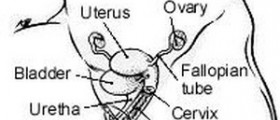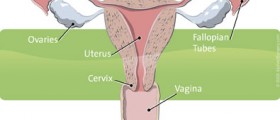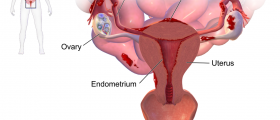
When the endometrial cells are located outside the uterus, this situation is called endometriosis. Estrogen is a hormone that activates the endometrial cells and these hormones are located in the uterus's wall lining. These cells perform certain work when they are in normal position, but they will continue with their same work when located out of the uterus. Menstrual cycle and reproductive system of women will suffer from this situation. Infertility is one of the possible problems that can arise if a woman has a hysterectomy and then endometriosis.
Hysterectomy types
The first one we will cover is radical hysterectomy, during which the upper vaginal wall and surrounding tissue are removed, along with the cervix and uterus. If there is a chance that the cervical cancer expands, this procedure will be done. Next type of hysterectomy is subtotal or partial, during which cervix remains, but the uterus, more precisely the uterus's upper two thirds, are removed. Total or complete is the third type of hysterectomy, which involves the removal of the cervix and uterus. This is maybe the most commonly performed hysterectomy.
Recurrence of the endometriosis after total hysterectomy
This can occur because total hysterectomy does not touch the ovarian, cervix and fallopian tube. In order to win in this battle, the estrogen is needed for the endometrial cells, and we know that estrogen is produced by the ovaries. So, you can see that, since ovaries are not removed during a partial or total hysterectomy, there may be recurrence of endometriosis after both types of hysterectomy. But the risks of endometriosis reappearing will be diminished if both ovaries are removed by the hysterectomy with bi-lateral salpingo-oophrectomy, which is a surgery that involves the removal of both ovaries. But keep in mind that endometriosis can be stimulated by estrogen therapy.
Complete menopause cannot be caused by the surgeries mentioned and a woman can have children afterwards. Mini-periods can occur among women who had a partial hysterectomy because during this procedure, small area of the uterus will remain following the cervix. Bleeding will not occur after the total hysterectomy, because the whole uterus is removed. Monthly cycle needs hormones that are produced by the ovaries, so you can have a situation during which bleeding is eliminated, but the monthly cycle is continued. Gynecologist must be consulted about the levels of endometriosis after the hysterectomy procedures, in order to find a method of hysterectomy that suits you.

















Your thoughts on this
Loading...